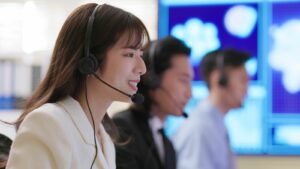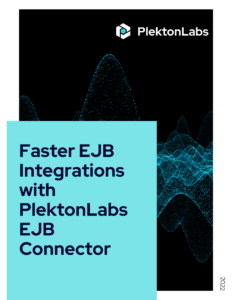For many people, art is a sublime experience, separate from the dreariness of everyday life. On the other hand, technology has infiltrated every aspect of our lives. While enterprises and individuals are reaping the benefits of the race towards digital transformation, where does that leave the creative arts? Is there a connection between art and technology, with the latter influencing how art is created and consumed?
This article will examine whether digital transformation has any role in influencing art forms like paintings, music, literature, and architecture, and if so, how they affect art and the way we interact with it.
Art and Technology: The Effects of Digital Transformation on Art
Before we begin, it is important to determine whether advances in technology and the advent of digital transformation have an effect on art at all. Although there are many purists who claim that art must be created and enjoyed for art’s sake, with no connection to real life, this concept isn’t possible on a practical level.
There are countless instances of art imitating life. Artists often draw inspiration from real-life personal experiences, as well as current events in history, politics, and socio-cultural spheres. As technology is such an integral part of our lives, it is unlikely that it hasn’t seeped into creative arts. In other words, technology has an effect on the way art is created and enjoyed.
Visual Arts
Digital transformation may have had the biggest effect on arts such as paintings, sculptures, and other visual mediums. The concept of connected experiences is important in digital transformation and this translates best in paintings and drawings and the way they are experienced.
Advances in virtual reality allow people to walk through art galleries and museums halfway across the world. This technology is also used in architecture, where clients can view models in real-time and even walk around inside them to see what they will look like in real life.
In addition, APIs have bought the world of art to people sitting in their homes. For instance, the Met Gallery introduced an open access policy and now uses the Metropolitan Museum of Art Met Collection API to allow everyone to view and share over 400,000 pieces of art.
But it doesn’t end here. Viewers can also access information about the artwork, various artists, as well as historical background and contexts. As a result, information about arts and culture is easily available to the general public.
Ever wanted to own a Manet? APIs also make it possible to own digital forms of paintings. Art enthusiasts across the world can own a digital collection of artwork through websites that use APIs. This is also a useful resource for artists and art students everywhere.
Moreover, technology has created unique opportunities for artists and filmmakers to experiment with. Art and technology can intertwine, resulting in unusual paintings and drawings, which could not have been possible without digital advances. Digital art also removes the need for creating art with traditional mediums like canvas and paints.
Music
The music scene has also seen massive changes over the past few years. Album sales have plummeted because of streaming services, but musicians can connect to fans on social media, rally support for themselves and social causes, and even promote their work directly to their audience.
Platforms like Shazam API helps developers create music applications. However, they also help identify trends in the industry, provide recommendations, and generate insights that help record labels and artists alike.
The pandemic also highlighted how artists can connect with their fans in the absence of concerts. Many musicians took to their YouTube channels or Instagram to perform from their homes or even discuss music, movies, or current issues with their fans.
Literature
In addition, technology also has an effect on literature. Art has a transformative effect and can change the way we view the world around us. Science fiction has predicted many advances in science and technology that we experience today and may predict where technology will take us.
More importantly, however, stories and poetry can humanize technology. Often, the latest advances in tech can seem futuristic, almost alien. Sci-fi stories create a space where technology is grounded with realism, appearing familiar and even friendly, while appealing to the reader’s imagination on what humanity can accomplish in the future with technology as a tool.
Automation is another area where digital transformation is currently affecting literature. Publishing houses make use of technology in the form of information retrieval systems, indexing, and cataloging, as these repetitive tasks can be sped up with automation. Technology has affected sales and distribution with the popularity of E-books and paperless reading.
But that’s not all. APIs and the connectivity it offers also have an effect on the kind of art consumed. The ability to share music, art, and literature across borders has allowed artists all over the world to showcase their work and even make a living from it.
Independent publishing through Amazon’s Kindle has catapulted many authors to fame and Patreon has allowed many artists to support themselves by focusing solely on their craft while connecting them with their audiences.
Technology has also led to a renaissance of sorts. Writers from all over the world can promote work in their language, promoting their folk stories and traditions. This has created a newfound interest and appreciation of non-Eurocentric literature (as well as music and other art forms) which would not have been possible with the connectivity that technology has to offer.
Wrapping Up
It isn’t unrealistic to say that technology has affected the way art is produced and experienced, especially when we see how a need for API-led connectivity is vital for our day-to-day activities. Digital transformation continues to change the world and things like music and stories are a great of capturing the zeitgeist of the age of technology.
While only time can tell just how deeply art can be influenced by digital transformation, it will be interesting to see where the collaboration of art and technology takes us.




